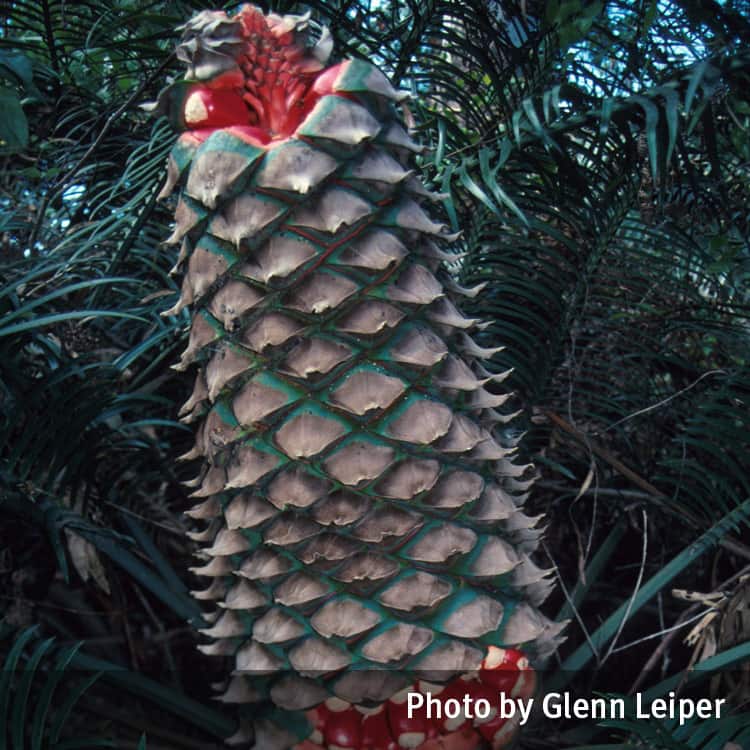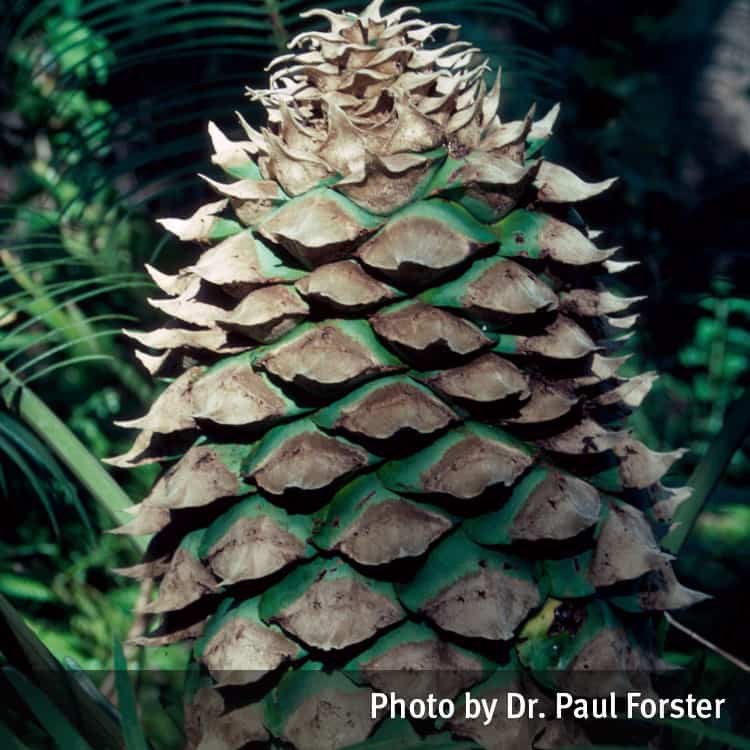Warning
Seek urgent medical attention for all ingestions.
Description
Palm-like plants generally larger than Macrozamia sp. with broader, more leathery leaf segments.
Leaves are dark green and glossy, with leaflets attached to the upper side of the stalk or rachis, near the midline. The leaves are 10-35cm long and 40-60cm wide, the leaflets with parallel veins and no midrib.
Fruits are a central cone, similar to those of Macrozamia sp. but are generally larger, more conical in shape and not stalked, usually about 40-60cm long and 10-26cm wide. Seeds are red, 4-6cm long and 3-3.5cm wide.
Toxicity
Symptoms
Ingestion of the raw fruit will cause severe gastrointestinal irritation and abdominal cramps with vomiting and nausea, diarrhoea, and in severe cases, liver damage and muscular paralysis. There are also records of death following ingestion of untreated seeds or fruit. The male cone has a fruity odour when releasing pollen and this has been recorded as causing respiratory distress.
Images


Details
Common name: Burrawang palm
Botanical name: Lepidozamia species (most commonly Lepidozamia peroffskyana)
Other common names: pineapple zamia
Family: Zamiaceae
General description: Palm-like plants generally larger than Macrozamia sp. with broader, more leathery leaf segments.
Flowers: –
Leaves: Leaves are dark green and glossy, with leaflets attached to the upper side of the stalk or rachis, near the midline. The leaves are 10-35cm long and 40-60cm wide, the leaflets with parallel veins and no midrib.
Fruit/Berries: Fruits are a central cone, similar to those of Macrozamia sp. but are generally larger, more conical in shape and not stalked, usually about 40-60cm long and 10-26cm wide. Seeds are red, 4-6cm long and 3-3.5cm wide.